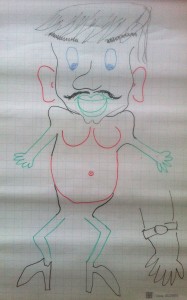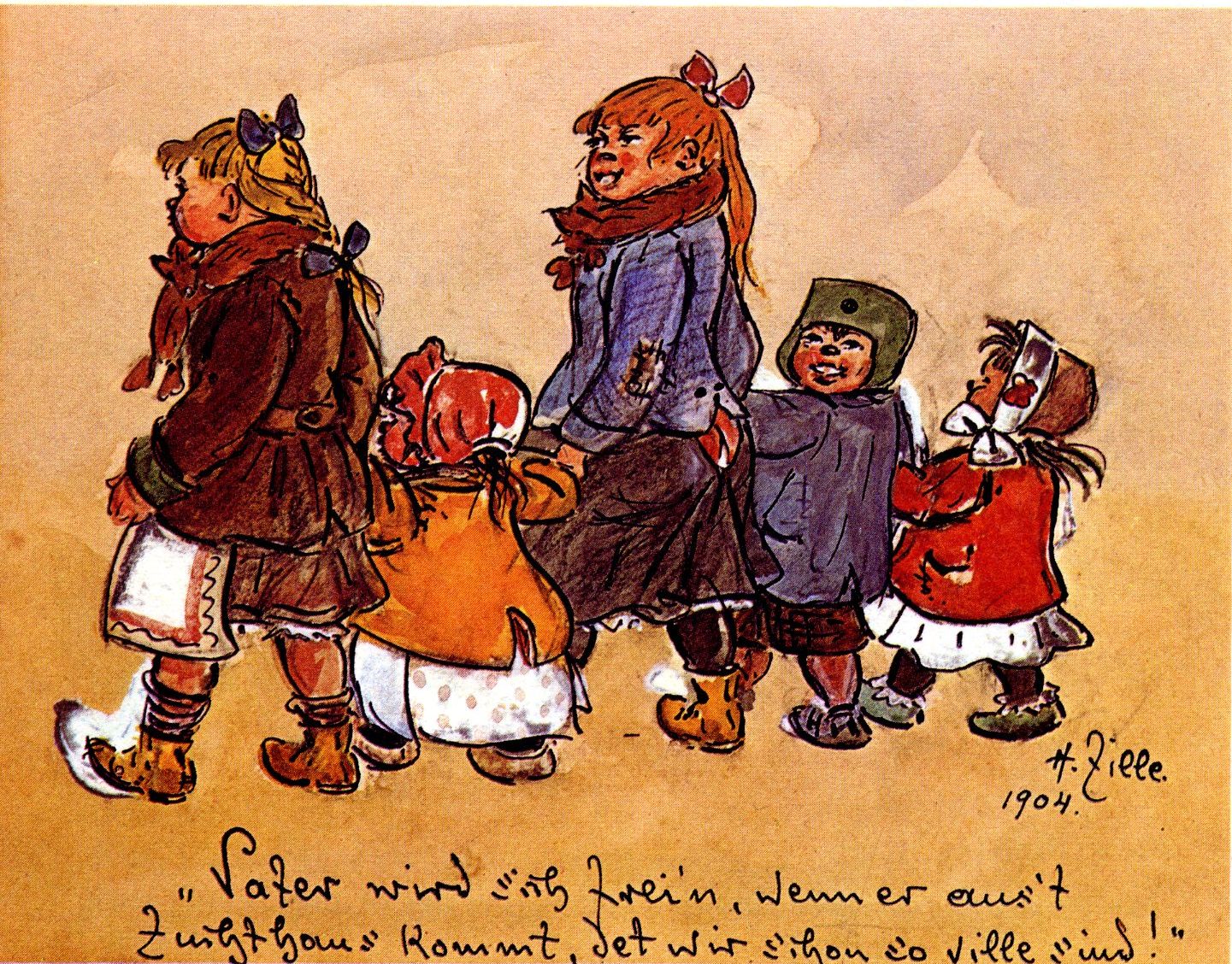Linguacamp describes itself as an unconference. No audience, no presenters, just participants. In German: Teilgeber. Held for the first time in 2013 in Berlin, it visited Hanover in 2014, but this year it was back in Berlin at the Freie Universität. When explaining the thinking behind lesson jams, I’ve said how one reason for kicking them off in the first place was the wish to go to a conference where the knowledge of everyone in the room could be tapped. Linguacamp is just that conference.
First up were the introductions, followed by the planning for the day. Within half an hour 20 sessions had been suggested and accepted by the group of around 50 participants. There were five slots over the course of the day with four sessions running simultaneously at any one time. So there’s loads that I (unfortunately) missed. I suggested a session on pop music lyrics in the class room. I called it Yaourter, as that’s what the French call singing along to foreign songs that you don’t really know the lyrics to. I also suggested a session that someone else should lead on Berlinerisch; the Berlin dialect. How it sounds and what words are used and how it’s connected to that Berlin attitude called Schnauze. Theresa Gorman also suggested a session that I agreed to lead on about drawing in the language learning classroom.
Yaourter
First up was ‘Yaourter’. A fairly relaxed group of us arranged ourselves on the chairs in the reception and swapped ideas. I had quite a few, because I use pop songs quite a bit in class, everybody else had quite a few ideas as well, so we ended up with a lot of ideas. I made a few notes and these are the German bands/ singers that people suggested as good for language learning:
Peter Fox
Deichkind
Cro
Die Totenhosen
Die Fantastische Vier. (The song ‘Die Da’ was recommended).
Unheilig
Herbert Grönemeyer. (Although some participants pointed out that the enunciation sometimes isn’t so clear)
Reinard May
We didn’t discuss so many singers/ bands in English, but Divine Comedy (Tonight We Fly) and Nina Simone (Ain’t Got No) were mentioned.
We talked about a couple of useful publications which include songs:
Singing Grammar (Cambridge)
English File (Oxford)
Some websites were also discussed. None are dedicated to pop music in the classroom, but have examples of the use of songs in the classroom
busyteacher.org
yabla.com
lessonstream.org
Paul Walsh recommended making subtitles to videos with intentional mistakes and asking students to listen for those mistakes. Here’s a fuller explanation of the activity on his website.
Someone else, whose name I didn’t take down, suggested using lyrics to generate conversation in the class before listening to the song. For example, taking out any questions and asking students to ask each other the questions included in the song.
Will threw the word ‘mondegreen’ into the discussion. Apparently it describes when a native speaker mishears the lyrics of a song. For example Jimi Hendrix’s ‘excuse me while I kiss the sky’ has apparently been misheard by many as ‘excuse me while I kiss this guy’.
Drawing in class for beginners
I can’t remember the exact name of this session, but it involved drawing. I gave a quick demo of the types of drawings I do in class on the flipchart paper. For example, the way that you can use the positions of the eyebrows and the mouth to convey emotion. I also tried to explain how drawing in class does not need to be complicated to be effective. That once you’ve drawn the face, the rest of the body is essentially tubes, to which a few small details can make the difference (for example drawing the collar or the buttons on the shirt). I usually use drawing to relax students and make them laugh (sometimes at my drawings too).
 We tried out a few games that participants suggested could be played with learners. I suggested the body drawing game. We had a two teams and each member of each team had to challenge a member from the other team to draw a part of the body. Gradually a body appeared…
We tried out a few games that participants suggested could be played with learners. I suggested the body drawing game. We had a two teams and each member of each team had to challenge a member from the other team to draw a part of the body. Gradually a body appeared…
Another game suggested was to give a member of the class a picture to draw, such as a house. They have a minute to draw the picture. The other members of the group should then ask that person questions, which they have to stop and answer if the question is correctly formulated. We tried the game out and it was good fun.
Another good game was introduced to us as the Montagsmaler game. ‘Monday illustrator’ in English. It’s similar to Pictionary. One team gives a member of the other team a word to draw. Their team then has to guess what that word is within a minute.
I reckon that drawing in the classroom is a theme that could really be developed. Important if you want to get better at drawing in front of students is just to practice and get quicker at what you can already do: put some memory into the muscles! It doesn’t have to be complicated to look good and be interesting. The ideas around drawing in the classroom and uses could also be developed. I’ve used it in the past to explain bits and pieces of grammar, which was something we didn’t get round to discussing at Linguacamp.
Berlinerisch
David gave this session. It was one of the sessions that I had asked for. I think that it’s important that learners of German are exposed to some of the non-Hochdeutsch types of German that they might encounter while living in Berlin. Firstly, because if they can recognise it, learners will know why they are having difficulty understanding what someone is saying. Secondly, because if a few key features of that type of German are analysed the learner should better be able to understand what is being said. Thirdly, because it can be used as a comparison to help the learner’s own pronunciation. Berlinerisch is just one of the types of German that is heard in Berlin. (And of course there are different types of Berlinerisch. Ask any Berliner and they’ll tell you that the real Berlinersich of their grandmothers and grandfathers has already died out.)
David explained some of the variations on Hochdeutsch.
For example:
was – wat
das- dit
gemacht- jemacht
ich- ick
He also introduced a couple of phrases:
JWD– janz weit draussen, which means ‘out in the sticks’
Nischt als jegend, which is used to describe somewhere that is in the middle of nowhere
We also took a look at a Zille cartoon. Zille was a cartoonist and photographer who documented life in Berlin at the turn of the century.

The cartoon combines the Berlin dialect with the irony that is also an important part of the Berliner Schnauze. The line translates as: ‘When he gets out of prison, father will be so pleased that we are now so many!’.
I can’t find the full version of a rhyme that we read, but this is a shortened version that I found on the internet:
Ick sitze da und esse Klops.
Uff eenmal kloppt’s.
Ick sitze, kieke, wundre mir,
uff eenmal is se uff de Tür.
Nanu denk ick, ick denk nanu!
Jetzt is se uff erst war sie zu.
Und ick geh raus und kieke.
Und wer steht draußen?
Icke.
I really enjoyed finding out more about Berlinerisch and practicing myself a little bit. I reckon it’s another session that could easily be developed to good effect!
Creative Learning Methods